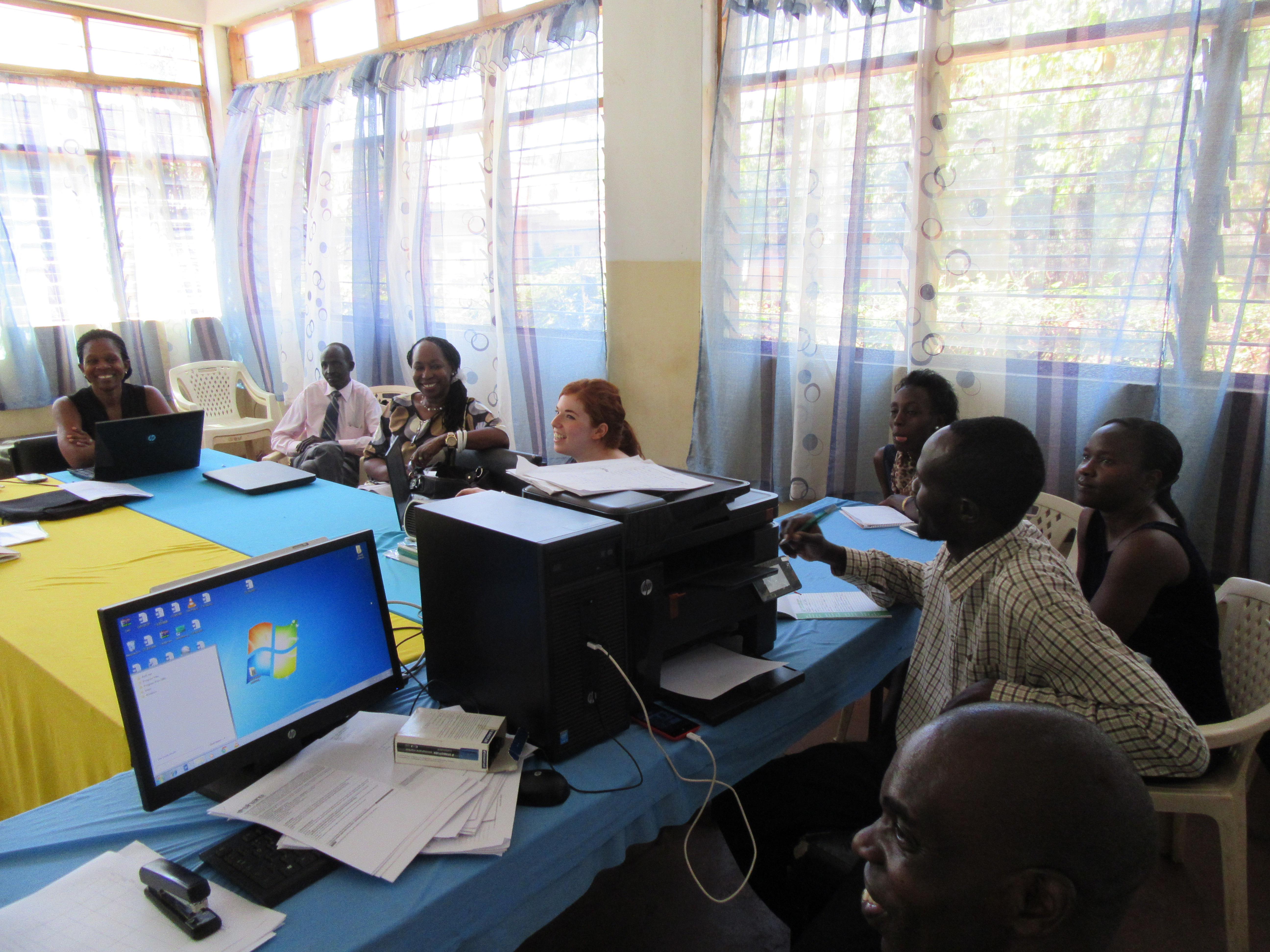Challenges in Measuring Gender Equality in Academia

Researchers and SHARE staff at the Great Lakes University of Kisumu, Kenya.
Challenges in measuring gender equality
I’ve recently been grappling with some challenges around measuring gender equality in SHARE. Capacity development is a key part of SHARE’s programme, which involves supporting our partner institutions in Sub Saharan Africa to build their research capacity. We also have a focus on gender equality and are keen that our capacity development work is inclusive of women academics. Gender is also a DFID priority and an important issue to consider in development more generally. In Sub-Saharan Africa, women are under-represented in academia; only 30% of researchers are women.
How do we monitor gender equality in SHARE?
SHARE has several quantitative indicators which seek to monitor gender; these focus on women’s participation in training and RIU events as well as the representation of women authors in our journal publications. At present, we don’t have qualitative data to support these numbers and help us better understand the context. Another challenge is that publications are only a proxy indicator for women’s participation in academia; less publications by women suggests less representation in general which is a broader issue. We’re also potentially missing out on information about women’s participation in other areas of research and their contributions to academia outside research.
Barriers for women in academia
There are no studies that specifically discuss publications from Sub-Saharan Africa and gender, but I did find lots of research on issues contributing to gender inequality in academia more generally. A key factor is gender norms, expectations and stereotypes about the roles that women and men should play in society. Gender norms may include ideas that women have limited capability to conduct research or an expectation that women should manage household work, childcare responsibilities as well as their academic career. Both men and women can perpetuate these stereotypes and be affected by societal expectations of what role they should play.
Gendered norms can also create and shape structural barriers, for instance recruitment/promotion practices that favour some over others or inflexible working conditions that don’t accommodate childcare or other responsibilities. The gender pay gap in academia is often found at senior levels, suggesting that structural barriers lead to under representation of women at these levels.
If you’d like to learn more about barriers for women in academia, this great blog by INASP captures some of the specific barriers faced by women academics in Tanzania.
The power of theory
The four powers model provides a useful theoretical approach to better understand the concept of empowerment. It characterises four types of power; power-over referring to structural power relations; power-to referring to individual agency or ability to use skills; power-with referring to collective action to bring about change and power-within referring to resilience or self-belief. I realised that like other implementers, most of our indicators focus on power-to and we may be missing the bigger picture.
Ways to improve our monitoring
As a starting point, we should better understand the context of each of our focus countries and what the gendered norms are. This will involve using qualitative methods to complement our quantitative data. We could also further disaggregate our existing data on publications to find out what this tells us about women’s participation in different levels of academia.
It’s also important to remember that increasing the number of women writing publications is still unlikely address broader structural and institutional issues. I reflected that we are trying to measure gender equality because it matters - not because we have a target to meet. In the next few months, I’ll be working with SHARE’s partners and exploring ways to better capture the bigger picture about gender, research and capacity development.
If you’d like to find out more about this topic, check out our recent blog on Quantifying the Unquantifiable: Challenges Around Measuring Gender in Development.
